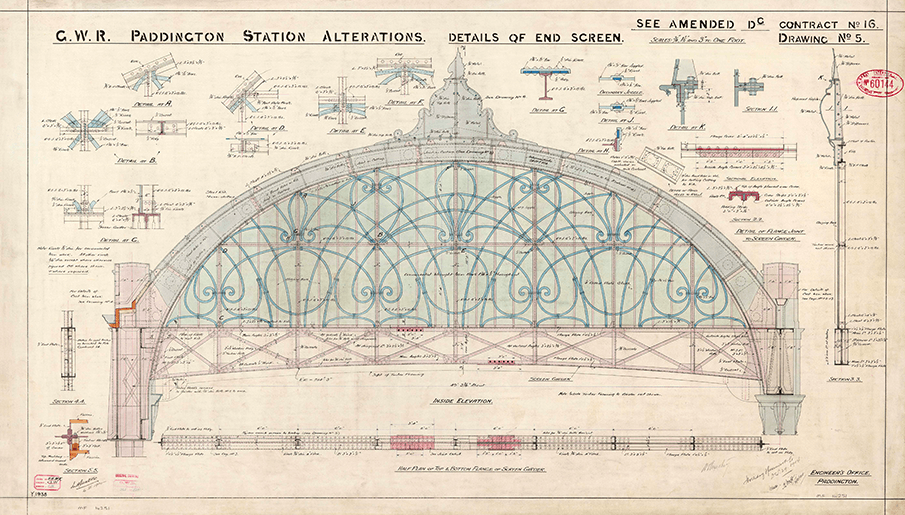The history of London Paddington station
Paddington station is the grand terminus for the Great Western Railway that Isambard Kingdom Brunel always intended.
Its history reflects that of the railway throughout the 19th, 20th and into the 21st century.

Original plans abandoned
For the London terminus of the Great Western Railway (GWR), Isambard Kingdom Brunel was planning a grand building at Paddington. He wanted it situated near to both the Grand Junction canal and the Regent’s canal. Instructed by the GWR to economise due to the soaring costs of building the main line, Brunel had to abandon his original plans.
A temporary station was created using the arches of Bishop’s Bridge Road as a façade and to provide passenger facilities. This station opened on 4 June 1838, along with the new line which had been constructed as far as Maidenhead.
As the main line through to Bristol was opened, and the GWR’s involvement with other companies whose railways joined with the main line increased, the temporary terminus was extended. In 1850, to accommodate the increasing traffic, the GWR agreed to the construction of a new permanent station to be designed by Brunel.
Brunel’s ‘new’ station
Brunel was deeply influenced by the design and construction of the Crystal Palace for the Great Exhibition of 1851. This can be seen in his use of wrought iron and glass in the three-span roof at Paddington.
At the time, this was the largest train shed roof in the world with a main span (102’ 6”) and two smaller ones to the north (70’) and south (68’). These spans are crossed by two transepts, all overlooked by three oriel windows in the station building on today’s platform 1. The station decoration, including the iron tracery on the train shed screens, was provided by Matthew Digby-Wyatt, Brunel’s architect on the project.
Fox Henderson & Company, were contracted as builders for the station. The main station building was constructed along Eastbourne Terrace. This included offices, the new boardroom for the GWR and a royal waiting room. The Great Western Hotel was built along Praed Street, and opened in conjunction with the new Paddington Station in 1854.
Expansion in the 20th century
Brunel’s station was large enough to cope with the expansion of the Great Western Railway over the next 50 years. By the early 20th century new accommodation for increasing amounts of both traffic and employees was needed. On-going works from 1904 saw the footprint of Paddington Station increase. A more defined access area known as ‘The Lawn’ was created. And more office space was created by extending the Company’s offices along Eastbourne Terrace.
Major changes included the building of ‘Span 4’ between 1913 and 1916 which increased the number of platforms at the station. Today this covers platforms 9 to 16. It was designed by the GWR’s engineer, W Armstrong, with architectural features to match Brunel’s original roof as closely as possible.
Further expansion of station buildings took place in the 1930s. This included a striking new ‘art deco’ office block on the west side of the station, which also remodelled passenger facilities in ‘The Lawn’.
Updating for the 21st century
During the 1990s Paddington Station was extensively refurbished. The glass in Brunel’s original roof was replaced with polycarbonate glazing panels. As well as the restoration of Digby-Wyatt’s ornamental tracing and significant improvements to The Lawn. A proposal to take down ‘Span 4’ to accommodate facilities for Crossrail was controversial.
Between 2009 and 2010 the Edwardian roof was instead restored by Network Rail. Crossrail facilities are now housed underneath Eastbourne Terrace.
Did you know?
In the Great Western Railway Act of 1835 which allowed the railway to be built, the original terminus of the Great Western Railway was to be shared with the London and Birmingham Railway’s terminus at Euston.